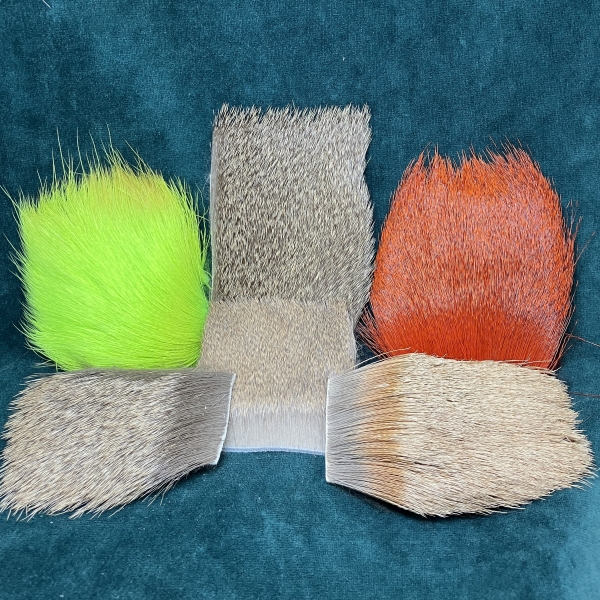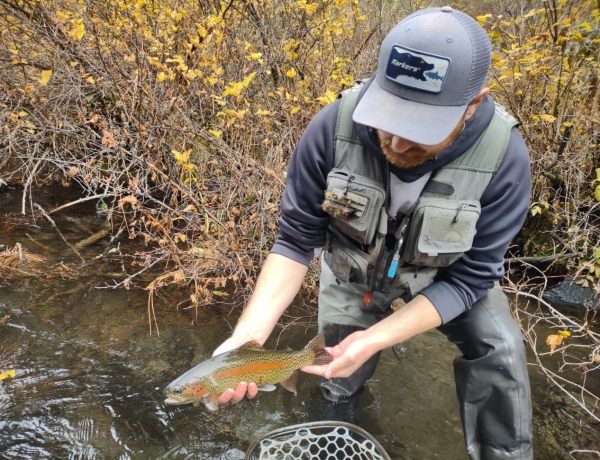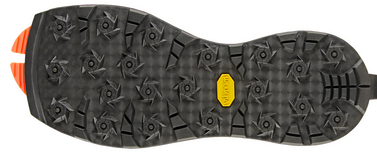As the water temperature warms on the Deschutes, anglers across the world anticipate the dry fly hatch of the year for central Oregon's most famous river- the salmonfly hatch. While the big bugs certainly are exciting on the surface, they also provide angling opportunity subsurface for people who may want to avoid the crowds or just wring as much enjoyment out of these monster stoneflies as possible. The lower Deschutes has the publicity, but the middle and even parts of the upper sections have varying degrees of big bugs as well.
The Angling
Fishing this "pre-hatch" is pretty straightforward. Take a large stonefly nymph, and fish it tight to the bank or directly downstream of fast, oxygenated water. If you want to add another fly behind the large one, typically caddis pupa or PMD nymphs will be in the drift as well. If you're fishing the right water at the right time of year however, the fish will be looking for the big bugs most of the time. Indicator nymphing works as always, but this is also a good opportunity to fish the lower Deschutes with a euro rod because the fish will be shallower than normal and more accessible to the euro angler. The main thing is to get your flies down to the bottom, because that's where all the bugs are starting from. Some people like using specialized indicator lines for nymphing, but a normal floating line works well for most of the river. However you deliver the flies, we have plenty of new, classic, and jigged stonefly patterns at the shop to fill your box with.
The Entomology
Salmonflies and golden stoneflies, which are the two big bugs that make up the "hatch" on the lower Deschutes, are anywhere from a size 10 to a size 2. They both have basically the same life cycle for angling purposes. They live in the river for a few years, and then emerge in late spring as the water temperatures and photoperiod begin to swing towards full on summer. Before these stoneflies can take to the air, they have to first become adults and emerge. Stoneflies emerge by crawling to the bank rather than emerging on the surface mid-stream. This means that there isn't really an emerger pattern for stoneflies in the sense of say, a mayfly emerger that is designed to sit in the surface film. The way you want to fish this emergence is to fish the nymphs closer and closer to shore as the bugs get ready to crawl out. The salmonflies and golden stones live most of their nymphal stage in oxygenated riffles and runs with large cobble, and they migrate from these habitats to shallower spots just before crawling out on to dry land. What this means for the angler is that in the weeks before the adults are seen, large numbers of nymphs are crawling to their shallow pre-emergence habitats and in the process, getting knocked into the drift much more often than normal. If you've ever seen the adults when the hatch is in full swing, you know that there are A LOT of bugs. Imagine that many bugs (plus a few more unlucky ones that didn't make it out before getting eaten) and that's the amount of nymphs that are available to the trout before the adults are seen.
The Environments Stoneflies Live In
The lower Deschutes has incredible numbers of both salmonfly and golden stones due to the diversity of habitat. Other parts of the river will have different habitat types and understanding this can help you maximize your opportunities. Salmonflies are grazers, which means they crawl around on rocks and eat plant matter, whereas golden stones are actually predators and will eat other macroinvertebrates. Salmonflies are also more pollution tolerant than golden stoneflies. What this means is that in certain places you will see more salmonflies than goldens, and in other places you might see more goldens than salmonflies. For example, the middle Deschutes typically has more algal growth and plant detritus than the upper Deschutes, so you see more salmonflies on average from Benham to Billy Chinook. From Benham upstream, you see more golden stones. Conversely, in the Metolius, there are more species of bugs than you can imagine, so there are plenty of food items for the predatory golden stones. However, the high gradient and cold spring water in the river doesn't lend itself well to the food that salmonflies like, so there are abundant golden stones but not really any consistently fishable hatch of salmonflies. In the Crooked below Bowman dam, the gradient is low and the sediment load is high. Big stoneflies that have large gills and need more oxygen than small bugs have trouble respirating in those conditions and so you don't really see any fishable hatch of salmonflies or golden stones out there.
As this article gets published, there are stoneflies all over central Oregon migrating towards shore just asking to get knocked loose, and the trout are certainly paying attention. What are you waiting for?


